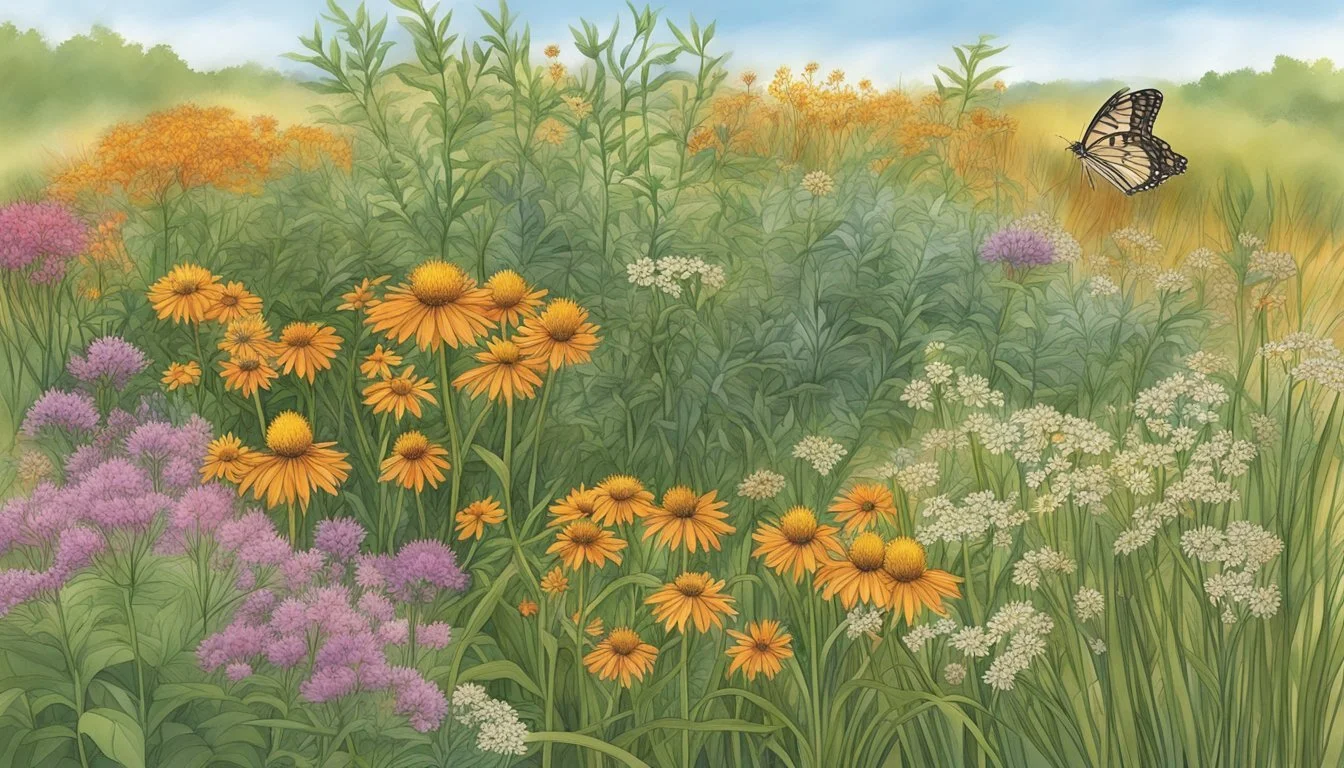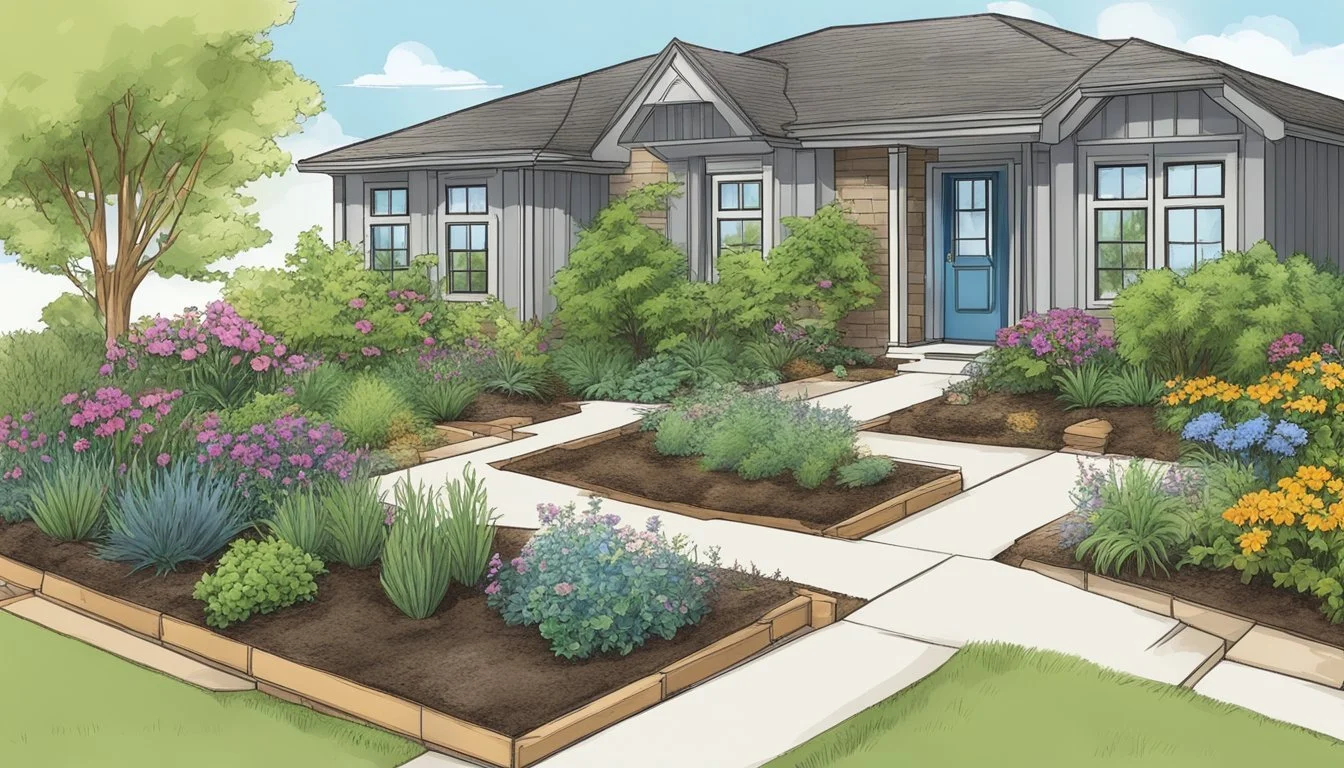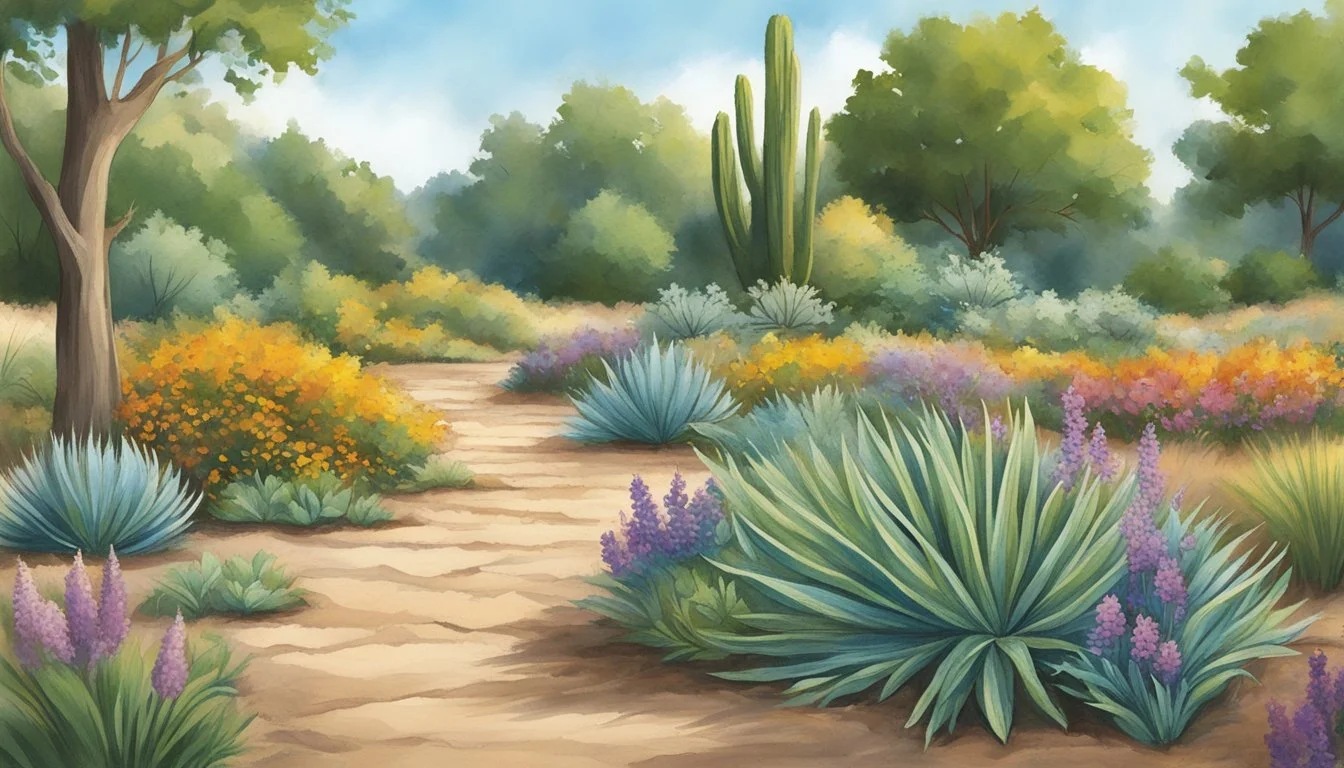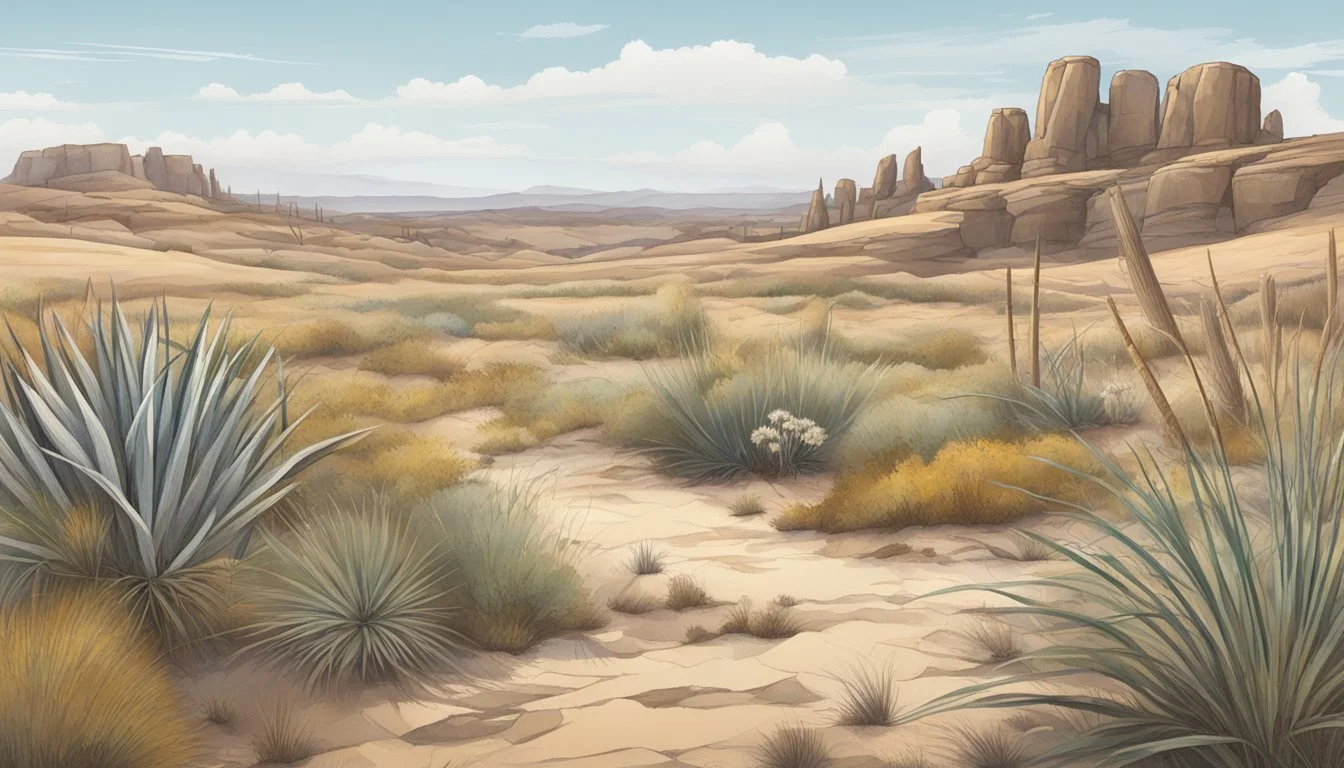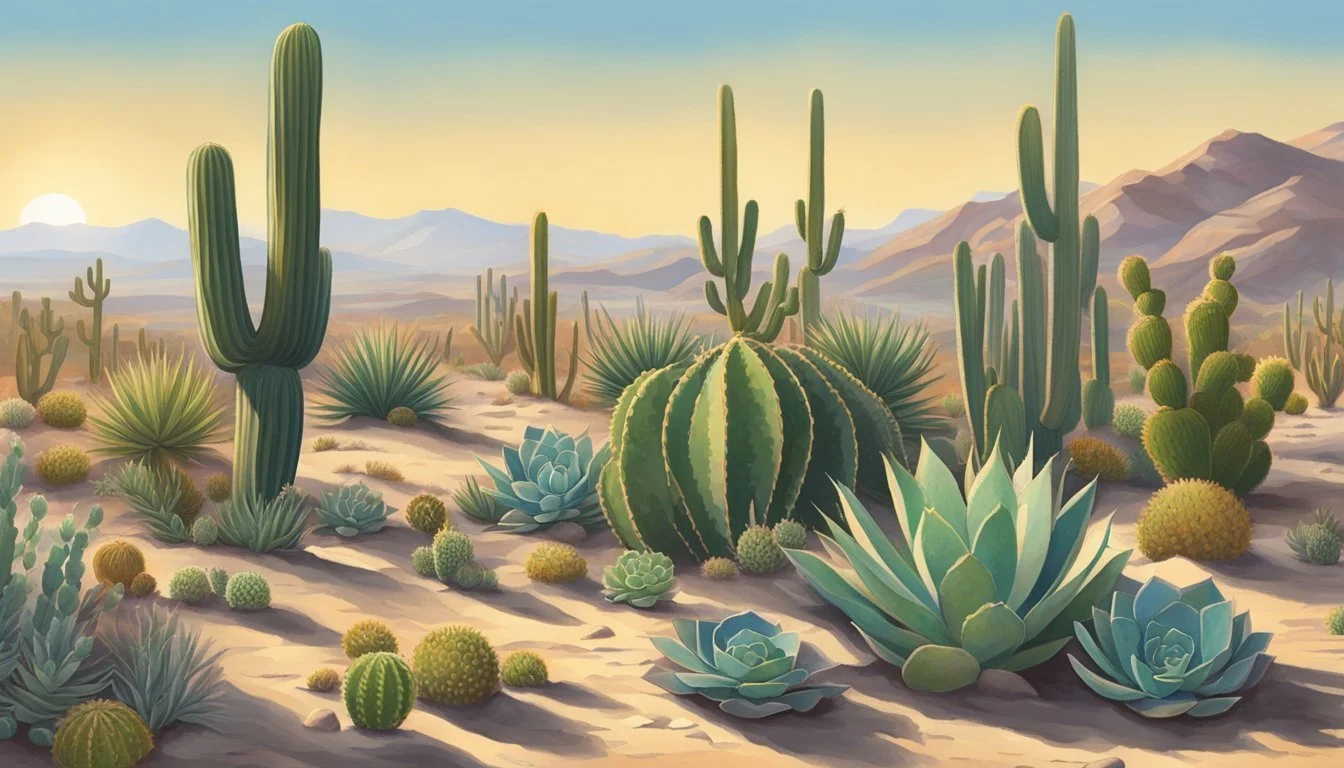Drought-Tolerant Plants in Illinois
Thriving Flora for Arid Climates
Gardening in Illinois can sometimes be challenging due to the varying weather conditions, particularly the bouts of drought that can occur. This makes the choice of plants critical for maintaining a healthy and vibrant landscape. Drought-tolerant plants are an excellent option for Illinois homeowners who wish to uphold an attractive garden while minimizing water consumption. These plants have adapted to survive in conditions with limited water, often by developing deep root systems or drought-resistant foliage.
Incorporating plants such as the hackberry and purple beautyberry into the garden not only ensures a colorful display but also contributes to water conservation efforts. The hackberry tree, recognized for its durability, thrives across a wide range of hardiness zones and brings the added benefit of spring flowers. Alternatively, the decorative purple fruit of the purple beautyberry adds a stunning visual dimension to the fall landscape. By choosing plants well-suited to Illinois' sporadic climate, gardeners can create a sustainable garden that withstands the dry summer months.
Drought-tolerant perennials offer another layer of resilience for the Illinois landscape. Species like the false blue indigo establish deep root systems, allowing them to access moisture below the soil's surface and thrive during periods of drought. Incorporating these hardy perennials can lead to a thriving garden that requires less frequent watering, thereby supporting both the environment and the gardener's resources. From trees to shrubs and perennials, a diverse array of drought-tolerant plants are available to suit the needs of Illinois gardens.
Understanding Drought in Illinois
In Illinois, drought is a significant environmental challenge, marked by periods of below-average precipitation. During drought, soil moisture levels drop, creating stress for plant life and impacting the local ecosystem. The state experiences this more acutely in the fall, when natural water sources are already lower post-summer.
The University of Illinois Extension provides insight into how these arid conditions affect both native and non-native plants. They emphasize the importance of selecting drought-tolerant plants to ensure survival through dry spells. These plants have adaptations that allow them to thrive with minimal water, maintaining soil health and reducing the need for supplemental watering.
Drought's impact on soil moisture is twofold:
Reduced water availability leads to a lack of necessary nutrients for plants.
Compacted soil, which can be a by-product of drought, further limits plant growth.
Residents are encouraged to monitor soil conditions and to consider planting species that are well-suited to Illinois's fluctuating weather patterns, thereby protecting their home landscapes against the unpredictability of climate-related stressors.
Basics of Drought-Tolerant Landscaping
Implementing drought-tolerant landscaping involves knowledge of soil composition, water management, and suitable plant selection. These elements, combined with effective design strategies and maintenance, create a resilient garden tailored for dry conditions.
Soil Considerations
Soil serves as the foundation for any drought-tolerant garden. Well-drained soil enriched with organic matter promotes water absorption and retention, reducing water stress during dry weather. Amending poor soil with compost can improve its quality and enhance the resilience of the landscape.
Water Management Strategies
Efficient water usage is pivotal in drought-tolerant landscaping. Deep watering techniques encourage plant roots to grow downward, seeking moisture and strengthening their tolerance to drought. Implementing a watering schedule that reduces frequency but increases depth can significantly improve water absorption and help plants withstand prolonged dry periods.
Designing for Dry Conditions
Designing for drought involves understanding site conditions like full sun or partial shade. Landscapes should be arranged to minimize transpiration and shield plants from excessive heat. Utilizing mulch can prevent water evaporation from the soil, and installing drip irrigation systems can maximize the efficiency of watering practices.
Plant Selection Principles
Selecting the right plants is critical for a successful drought-tolerant garden. Choose native or adapted drought-tolerant plants, such as certain perennials and prairie plants that naturally thrive in local conditions. Group plants with similar water needs to streamline care and maintenance.
Maintenance and Care
Regular maintenance, including mulching and applying the appropriate fertilizer, ensures plant health. Limit pruning to allow plants to develop a structure that resists dry weather and avoid compacting the soil to maintain proper aeration and water absorption.
Supporting Ecosystems
A drought-tolerant landscape can support local wildlife. Incorporate plants that attract pollinators like bees, hummingbirds, and butterflies to enrich the ecosystem. This integration not only enhances garden aesthetics but also boosts pollination and biodiversity.
Challenges and Solutions
Gardeners may encounter challenges like extreme heat waves or water restrictions. Solutions include choosing plants suited for the harshest conditions and using mulch to buffer soil temperature. Every problem has a solution, and with the right techniques, even the most problematic drought-tolerant garden can thrive.
Key Drought-Tolerant Plants for Illinois
In Illinois, gardens can thrive despite arid conditions by incorporating a range of drought-tolerant plants that offer varied textures, colors, and heights.
Perennial Favorites
Perennial plants are a cornerstone for any drought-resistant landscape due to their longevity and adaptability. The purple coneflower (Echinacea purpurea), recognized for its vibrant purple petals and central cone, is an excellent choice that brings both color and resilience to gardens. Similarly, Russian sage (Perovskia atriplicifolia), with its silvery foliage and spikes of lavender flowers, provides a stunning display while enduring dry spells.
Native Plants and Grasses
Illinois' native flora includes several drought-tolerant grasses and plants that are well-suited to the local climate and soil conditions. Little bluestem (Schizachyrium scoparium) is a native grass that stands out for its blue-green summer foliage turning to rich autumn tones. Showy goldenrod (Solidago speciosa) offers bright yellow flower spikes, and Joe Pye weed (Eutrochium purpureum), with its lofty purple flower heads, attracts butterflies while being low maintenance.
Succulents and Cacti
Though not traditionally associated with Midwestern gardens, some succulents and cacti can prosper in Illinois' climate. They require minimal water and have a unique aesthetic. Varieties such as hens-and-chicks (Sempervivum tectorum) or stonecrop (Sedum spp.) can provide intriguing textures and forms to a garden's rockier spots.
Shade Tolerant Varieties
Even in shaded conditions where drought tolerance is vital, there are several appropriate selections. Solomon’s seal (Polygonatum biflorum) and fern varieties provide lush, green foliage and thrive in the dappled light underneath tree canopies. For height and color, monarda (Bee Balm) stands out with its vivid flowers and fragrant leaves.
Ground Covers and Low Growers
Groundcover plants are excellent for minimizing bare soil exposure and retaining soil moisture. Thyme varieties serve as aromatic, low-growing options that tend to spread, creating a carpet of greenery. Creeping juniper (Juniperus horizontalis) is an evergreen choice that withstands dryness and blankets the ground effectively.
Unusual and Unique Options
For gardeners looking to add distinct touches to their drought-tolerant landscape, globe thistle (Echinops bannaticus) with its spherical blue blooms is an eye-catching addition. For contrasting texture, artemisia varieties contribute silvery, finely-cut foliage, and baptisia australis (Blue False Indigo) delivers striking dark blue flowers and an architectural presence.
Cultivation and Care Techniques
In cultivating drought-tolerant plants in Illinois, gardeners must adopt specific techniques to ensure plant health and vitality. These techniques revolve around optimizing watering, soil conditions, pest management, and seasonal care to minimize the need for maintenance while promoting plant resilience.
Watering Frequency and Techniques
Drought-tolerant plants typically require less water, often thriving on less than an inch of water per week. However, regular deep watering is crucial to encourage the development of extensive root systems that tap into deeper soil moisture. It's recommended to water early in the morning to minimize evaporation and to use drip irrigation or soaker hoses to target the water directly to the roots.
Soil Health and Improvement
For these plants to flourish, soil should be well-draining yet retain enough moisture to sustain plant life. To improve soil quality, incorporate ample organic matter to provide nutrients and enhance water retention. Maintaining a layer of mulch can help preserve soil moisture and temperature while suppressing weed growth.
Pest Resistance and Plant Health
Many drought-tolerant perennials possess natural resistance to common pests such as deer and rabbits. Nevertheless, consistent care and maintenance, including periodic inspections and suitable organic pest deterrents, bolster plant health, keeping them robust against various pests and diseases.
Weather and Seasonal Care
Gardeners should adjust plant care with changing seasons. For instance, watering can be reduced as plants become dormant with the approach of the first frost. On the other hand, during the peak summer heat, additional water might be necessary to prevent stress signs such as leaf scorch or curling leaves.
Signs of Drought Stress
Recognizing drought stress signs is critical. Gardeners should look for symptoms such as wilting, chlorosis (yellowing leaves), stunted growth, or scorched leaf edges. These indicators suggest the plant needs more water or is reacting to other stressors in the environment, prompting a reassessment of the care regimen.
Enhancing Visual Appeal
Choosing drought-tolerant plants does not mean sacrificing visual beauty in your landscape. Thoughtful selection and arrangement can create a vibrant tapestry throughout the seasons.
Combining Colors and Textures
A varied palette encompasses both color and texture, which are pivotal for a dynamic garden. For a bold display, combine the silvery foliage of lavender with the soft, fine-textured green leaves of salvia. Introduce wax-coated succulents that reflect sunlight alongside the gold and blue hues of blanket flowers. These colorful flowers not only add aesthetics but are also practical, as the wax coating and tiny hairs on some plants reduce water loss.
Focal Points and Accents
Designating focal points in the garden draws the eye and adds intentional structure. A cluster of drought-tolerant agave with their sculptural forms can serve as a central feature. Accenting these with pink blooms of Echinacea or the spiky purple flowers of lavender provides bursts of color while aiding in the conservation of water, enhancing the garden's overall appeal.
Maximizing Year-Round Interest
Ensuring your landscape remains captivating throughout the year involves selecting plants that offer seasonal interest. Variegated foliage plants, which exhibit more than one color on their leaves, can maintain visual interest even when not in bloom. Incorporating drought-tolerant plants that change colors in the fall or have persistent seed heads can keep the landscape engaging during colder months. Consider a mix of evergreen shrubs and grasses to maintain structure and color during winter.
Resources and Research
In Illinois, both natural and academic resources play vital roles in advancing the understanding and application of drought-tolerant plants. These resources not only support homeowners and businesses in creating resilient landscapes but also contribute to statewide water conservation efforts.
Local Extensions and Gardening Groups
The University of Illinois Extension provides invaluable guidance for gardening in counties like Livingston, McLean, and Woodford. Their initiatives, spearheaded by educators like Brittany Haag, focus on the selection and care of plants equipped to handle Illinois' variable climate. Local gardening groups also often collaborate with extensions to share knowledge and experiences on drought-resistant landscaping.
Case Studies and Success Stories
Successful implementations of drought-tolerant plants can offer insights into sustainable gardening practices. One such case involves California, where research has led to innovative approaches to plant drought tolerance and growth. Analyzing these successes informs Illinois residents and businesses on how to adapt similar strategies to Midwest conditions.
Guides for Homeowners and Businesses
For homeowners, concise guides are available to navigate the selection of drought-resistant greenery. The Illinois Extension's resources, such as their detailed recommendations of suitable plants, aid in creating landscape designs that minimize water usage while maintaining aesthetic appeal. Businesses involved in landscaping services utilize these practices to offer eco-friendly solutions to clients, emphasizing sustainability in urban and suburban settings.
Additional Considerations
When selecting drought-tolerant plants for an Illinois landscape, it is crucial to consider how these plants will interact with the local ecosystem, their response to soil amendments, and their long-term adaptation to climatic conditions.
Incorporating Wildlife Attractions
To encourage biodiversity, selecting plants that serve as attractions for local wildlife is essential. For example, plants like beardtongue (Penstemon) and agastache are not only drought-tolerant, but their tubular flowers also make them excellent food sources for hummingbirds and butterflies. Incorporating such plants into the landscape ensures that pollinators are supported while contributing to the overall health of the garden.
Using Mulches and Fertilizers
Effective mulching can significantly retain soil moisture and reduce water requirements for plants. Shredded hardwood mulch is recommended for its ability to limit evaporation, regulate soil temperature, and add organic matter to the soil as it decomposes. When it comes to fertilizers, a careful approach is advised. Over-fertilization can harm drought-tolerant plants, whose root systems are adapted to less fertile soil conditions. A modest application of fertilizer tailored to the specific needs of the landscape can promote healthy growth without excessive water usage.
Plant Adaptation and Evolution
Drought-tolerant plants often exhibit adaptations like smaller leaves to minimize water loss. Over time, these plants evolve efficient water conservation mechanisms, allowing them to thrive in dry climates. When integrating these plants into the garden, consider their individual adaptation strategies—deep roots that tap into groundwater or foliage that reflects sunlight, to name a few. Understanding these evolutionary traits can inform garden design, ensuring that selected plants are well-suited to the challenging Illinois climate.
Selecting the right plants and implementing beneficial gardening practices can lead to a sustainable, wildlife-friendly, and resilient garden that thrives despite the vagaries of weather.
Conclusion
Selecting drought-tolerant plants for an Illinois landscape is both practical and aesthetically pleasing. Gardeners can create a resilient garden that requires minimal watering and withstands the state's variable weather patterns. Plants like the blue false indigo have deep root systems, enhancing their ability to access water and survive dry conditions.
Incorporating these hardy species ensures a flourishing landscape while conserving water—a critical resource in times of drought. As they require less frequent watering, they also offer a sustainable solution and long-term savings in maintenance costs.
The use of such plants can lead to a diverse, beautiful garden that can thrive with limited rainfall. Homeowners can take pride in their contribution to water conservation and enjoy the varied forms and textures these plants offer. It's a responsible approach that doesn't sacrifice curbside appeal.
In summary, Illinois residents are advised to consider these adaptable plants for their gardens. By making informed choices, they support sustainability, reduce their environmental footprint, and can still enjoy a vibrant, thriving garden space.
Frequently Asked Questions
In this section, readers will find pertinent information about drought-resistant flora within Illinois, providing insights into plant selection for various garden needs and conditions.
What are the top low-maintenance plants that can tolerate drought in Illinois?
Low-maintenance, drought-tolerant plants for Illinois include the Hackberry tree (Celtis occidentalis), which can grow in a wide range of zones and offers spring flowers. Another hardy option is the Purple Beautyberry (Callicarpa dichotoma), recognized for its striking purple fruit in the fall.
Can you recommend some drought-tolerant plants suitable for landscaping in Illinois?
For Illinois landscaping, White yarrow is an excellent perennial that adapts well to local climates and requires minimal care. Purple Coneflower (Echinacea purpurea) is also a great choice, thriving in drought conditions with its purple daisy-like flowers and foliage that provides year-round interest.
Which plants thrive in full sun and are tolerant to drought in Illinois?
Plants that excel in full sun and drought conditions in Illinois include the resilient Purple Coneflower and White yarrow. Additionally, species like Spiderwort can withstand harsh sunlight while contributing to the local ecosystem by supporting pollinators.
Are there any drought-tolerant plants that can be grown in pots in Illinois?
Yes, many drought-tolerant plants can adapt to container living in Illinois. For example, False Blue Indigo (Baptisia australis) can be grown in pots and exhibits strong drought tolerance due to its deep root system which accesses moisture well below the soil surface.
What are considered the best species of drought-tolerant plants for an Illinois garden?
The best species for an Illinois garden hinge on minimal water requirements and native adaptability. False Blue Indigo and Purple Coneflower are top picks, providing ample aesthetic appeal coupled with practical drought resistance.
What characteristics make a plant drought-tolerant and suitable for Illinois climates?
Drought-tolerant plants typically possess deep root systems that tap into subterranean moisture and have adapted to Illinois climates through features like coarse, thick leaves that reduce water loss. They maintain resilience in the face of low-water conditions and often require less frequent watering and care.




